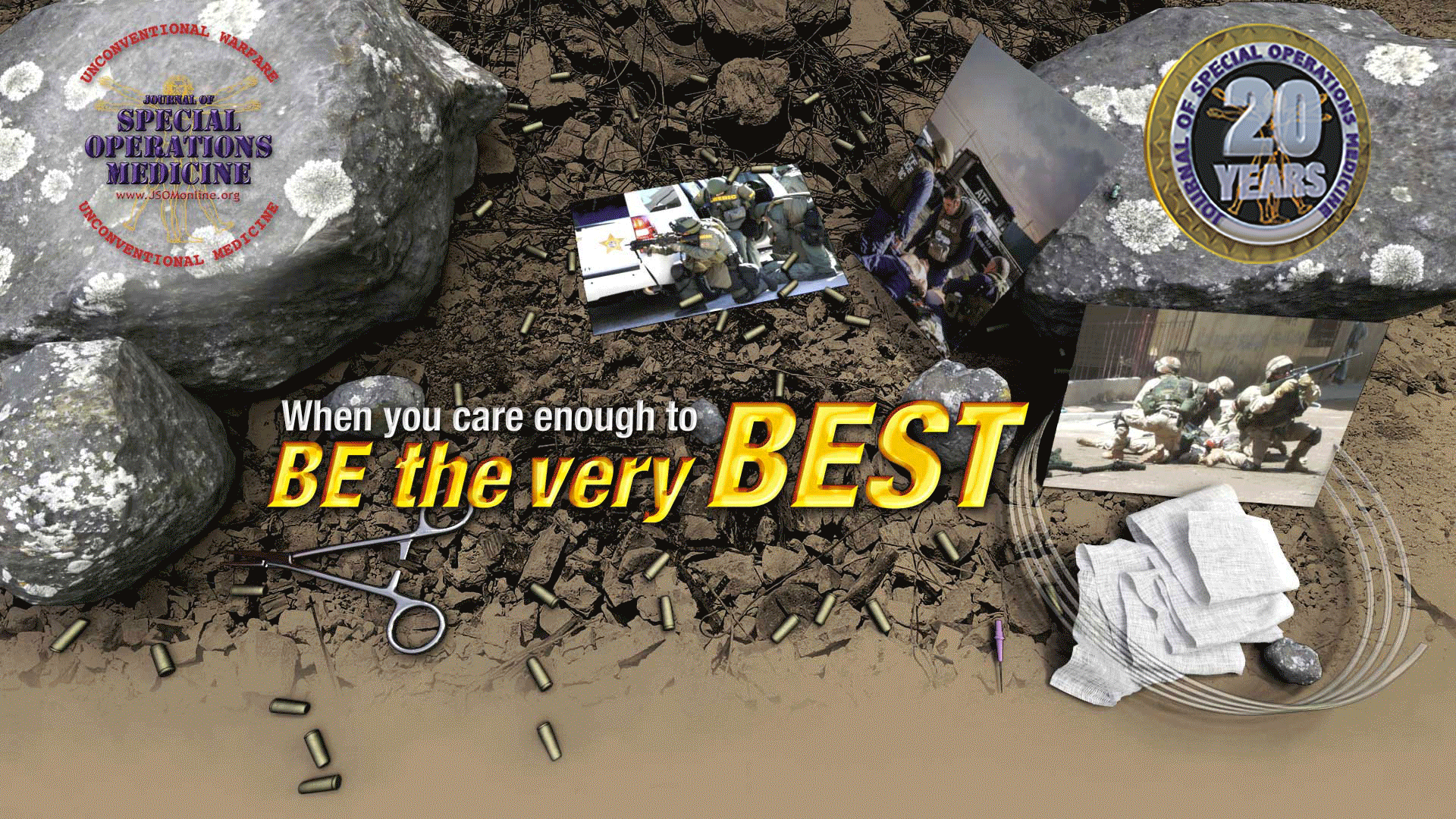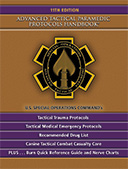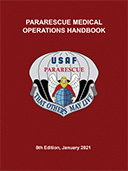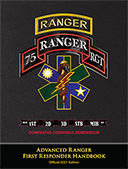
The OFFICIAL Journal of the Special Operations Medical Association.
Click the logo for more information.
July 2024 Feature Article
Evaluation of a Rebreathing System for Use with Portable Mechanical Ventilators
Summer 2024
Blakeman T, Smith M, Branson R. 24(2). 34 - 38. (Journal Article)
Abstract
Introduction: Maximizing the capabilities of available lowflow oxygen is key to providing adequate oxygen to prevent/treat hypoxemia and conserve oxygen. We designed a closed-circuit system that allows rebreathing of gases while scrubbing carbon dioxide (CO2) in conjunction with portable mechanical ventilators in a bench model. Methods: We evaluated the system using two portable mechanical ventilators currently deployed by the Department of Defense-Zoll 731 and AutoMedx SAVe II-over a range of ventilator settings and lung models, using 1 and 3L/min low-flow oxygen into a reservoir bag. We measured peak inspired oxygen concentration (FiO2), CO2-absorbent life, gas temperature and humidity, and the effect of airway suctioning and ventilator disconnection on FiO2 on ground and at altitude. Results: FiO2 was =0.9 across all ventilator settings and altitudes using both oxygen flows. CO2-absorbent life was >7 hours. Airway humidity range was 87%-97%. Mean airway temperature was 25.4°C (SD 0.5°C). Ten-second suctioning reduced FiO2 22%-48%. Thirtysecond ventilator disconnect reduced FiO2 29%-63% depending on oxygen flow used. Conclusion: Use of a rebreathing system with mechanical ventilation has the potential for oxygen conservation but requires diligent monitoring of inspired FiO2 and CO2 to avoid negative consequences.
Keywords: Mechanical Ventilation; oxygen; rebreathing; hypoxemia; transport
Integrating Military and Civilian Trauma Systems to Achieve Zero Preventable Deaths after Injury
Advances in trauma care have accelerated over the past decade, spurred by the significant burden of injury from the wars in Afghanistan and Iraq. Between 2005 and 2013, the case fatality rate for United States Servicemembers injured in Afghanistan decreased by nearly 50 percent, despite an increase in the severity of injury among U.S. troops during the same period of time. But as the war in Afghanistan ends, knowledge and advances in trauma care developed by the Department of Defense (DoD) over the past decade from experiences in Afghanistan and Iraq may be lost. This would have implications for the quality of trauma care both within the DoD and in the civilian setting, where adoption of military advances in trauma care has become increasingly common and necessary to improve the response to multiple civilian casualty events.
This report documents the remarkable decrease in casualties killed in action during the wars in Iraq and Afghanistan and the role of the Joint Trauma System, the CoTCCC, and the TCCC Working Group in helping to make that happen. It also outlines a clear and comprehensive vision for a National Trauma System that will enable the civilian and the military sectors to work in concert to help prevent ALL potentially preventable deaths in trauma victims.
Download a free PDF copy of the IOM ReportWhat Our Readers are Saying
I just finished reading the fall edition of the JSOM and I am completely blown away!!!! It is absolutely packed with exceptional and relevant information that without a doubt, will assist SOF Tactical Health Care professionals in providing relevant and evidence based patient care. Thank you for providing what I consider a "World Class Medical Journal". The journal itself and the website have become my primary resource for knowledge in tactical medicine."
Robert M. Miller
North American Rescue
Chief Innovation Officer
"There is no peer-reviewed academic resource that equals the Journal of Special Operations Medicine for support of the medical and veterinary lead in Stabilization, Security, Transition and Reconstruction (SSTR) operations, combat and field medicine, and adaptation of Tactical Combat Casualty Care into Tactical Emergency Casualty Care for the law enforcement and emergency management community in 195 UN member countries. JSOM is a valuable resource as we continue the Millennium Medicine Project, targeting the global population that lacks access to basic surgical services and providing crisis management, security, and defense support in this demographic."
Stephen M. Apatow
President, Humanitarian Resource Institute
(UN:NGO:DESA) and H-II OPSEC: Defense Support:
Humanitarian and Security Operations
"Military units that have trained all of their members in Tactical Combat Casualty Care have documented the lowest incidence of preventable deaths among their casualties in the history of modern warfare - and JSOM is the first journal to publish every new change in TCCC."
Frank K. Butler, MD
Chairman, Committee on Tactical
Combat Casualty Care (CoTCCC)
"The past 30 years has brought an amazing professionalization of the specialty of Tactical Emergency Medical Support (TEMS). As new standards are set and the world faces increasingly complex security challenges, it is critical that the front line medical providers supporting military, intelligence, and law enforcement operations have a mechanism to expand their knowledge and share best practices. The Journal of Special Operations Medicine offers civilian readers access to the most cutting edge developments in the field including updates on Tactical Emergency Casualty Care (TECC), the National TEMS Imitative and Council (NTIC), and combat lessons learned. JSOM is the one-stop shop for best practice and future advancements in civilian TEMS. One of the unifying principles across humanitarian, expedition and disaster response medical operations is the ability to make complex decisions in uncertain environments. The Journal of Special Operations Medicine is one of the most unique platforms for experts to convey lessons learned and relevant scientific advances across specialties that historically have little interaction. Whether you work for Doctors Without Borders, a DMAT, or provide medical support for expeditions in austere environments, Journal of Special Operations Medicine is your journal."
David W. Callaway, MD
Director, Division of Operational and Disaster Medicine
Operational Medical Director, Carolinas MED-1
Co-Chairman, The Committee for Tactical Emergency Casualty Care (C-TECC)
Civilian Vice President, Special Operations Medical Association (SOMA)










